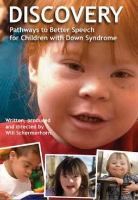Approved training videos related to intervention strategies for young children and families with young children.
Intervention Strategies
This presentation suggests practical approaches to help families and educators support children who have behavior or self-management challenges.
This video presents pediatric feeding strategies that will allow you to manage medical issues related to respiration, airway, and aspiration in non-medical environments, expand food repertoire wherever your client eat, design effective individual and group feeding environments in school settings, and conduct tele-visits that really work. It discusses the challenges and advantages associated with adapting pediatric feeding therapy in a variety of settings including home, school, medical, and telehealth. The presenter touches on dietary modifications, case law reviews, and the importance of written plans for young children with feeding difficulties.
This video examines the application of sensory integration principles in a range of natural environments such as the home and community for children with and without special needs.

This film takes the viewer into the real world of speech in children with Down syndrome. Through examples, interviews and stories, the DVD shows how parents and professionals can bring forth better speech and communication.
Using a Developmental, Individual, Relationship-Based (DIR) lens, this video discusses the importance of rhythms within children’s routines. Viewers will also learn how to match child and parent rhythms within their interactions and teach the caregiver how to respond sensitively and to adapt contingently.
These videotapes demonstrate the DIR model and how to use observation of spontaneous parent infant/child interaction during Floor Time to assess the child’s functional developmental capacities, motor and sensory processing (regulatory) profile, and interactive patterns with caregivers. Each case presents the full time spent with each child and family in the order they were seen, followed by a discussion of the professional impressions where they summarize the functional developmental capacities, the motor and sensory processing profile, as well as intervention ideas. Cases related to birth to three-year-olds can be watched for EI credit (up to 5.0 hrs): Introduction: The DIR model (45:13); Case 1. Alex, 3 years (70:00); Case 7. Curt, 3 years (80:00); Case 8. Gary, 22 months (66:00); Case 10. Alex, 2 years (87:24)
This training series introduces the Floortime approach for helping children to master the basics of relating and communicating. The creators of the approach demonstrate techniques that both follow the child’s natural emotional interests and challenge the child toward greater mastery of the social, emotional, and intellectual capacities. Cases related to birth to three-year-olds can be watched for EI credit (3.25 hrs): Introduction: The DIR model (45:13); Case 8. Gary, 22 months (66:00); Case 10. Alex, 2 years (87:24)
Stanley I. Greenspan and Serena Weider illustrate the principles of Floortime and the DIR model for children with special needs. This video shows parents how to help their child overcome challenges of sensory craving that interfere with his or her ability to communication. Also shows how better regulation will help your child reach higher developmental levels, from shared attention and engagement to social interaction and pretend play. Cases related to birth to three-year-olds can be watched for EI credit (2.0 hrs):Introduction: The DIR model (45:13); Case 1. Alex, 3 years (70:00)
Carol S. Kranowitz demonstrates activities that help children of all abilities to develop their bodies and integrate their senses.
Despite their best moments, toddlers and preschoolers often behave in ways that frustrate their parents and caregivers, and even endanger their own safety. They are not intentionally being “bad,” but what can parents and caregivers do to guide their behavior in a positive way? In this program, learn why misbehavior occurs and common reactions by parents and caregivers. Discover some rules of thumb for guiding the action and reactions of young children. Learn how to create and enforce a plan to help stop misbehavior and bring about desired behavior. See how consequences and rewards work to motivate children to control their own behavior.
A collection of 8 video clips which feature professionals with toddlers and preschoolers in Head Start, school, and early intervention settings, as well as parents at home with their young children. These real world examples illustrate key teaching and parenting practices which support inclusion of children with disabilities. Closed captioned.
This DVD shows how to put physical, occupation, and speech therapies in daily routines in classrooms. This video is intended for teachers, administrators, and therapists.
All children in the classroom benefit from having physical, occupation, and speech therapies embedded in daily routines. Research shows that children with and without IEPs improve their skills as a result. Planning, communication, and the support of the administration are key factors in the successful implementation of integrated therapies. Sound like a daunting task? View this video to see teachers, administrators, and therapists discuss how this model works, and how they implement their various roles in the classroom. It is evident that these teams are driven by the positive impact the integrated therapy model has on ALL children.
Although everyone processes sensory information, we interpret sensory information differently from one another. Someone dragging their fingers across a chalkboard or certain food textures may bother one person, but not another. When the way a person interprets or processes information from their senses interferes with learning and daily routines, it is considered Sensory Integration Dysfunction (SID) or Sensory Processing Disorder (SPD). Independent studies show that Sensory Integration Dysfunction can be found in up to 70% of children who are considered learning disabled by schools. But most go undiagnosed. A parent of a child with special needs, Girard Sagmiller, interviews occupational therapist Lisa Berry, who helps teach what sensory integration is, how to spot it, when and how it can interfere with learning, what you can do at home and school to help an affected child, and provides general tips and activities for sensory integration therapy
This companion to the It Takes Two to Talk book provides video examples of activities parents and professionals can use to develop the language and communication skills of young children. Includes video examples of children at each stage of early language development, from those who communicate non-verbally to those who have begun to use short sentences. Presents the accounts of two mothers of children with language delays and their participation in The Hanen Program for Parents.
Presents six stories that demonstrate recommended practices, as a therapist or early childhood specialist works collaboratively with a family to achieve meaningful goals for their child in everyday activities, and places. Facilitator’s guide by Larry Edelman.
This program focuses on the origins of the child with angry/aggressive behaviors, what factors contribute to their behavior, interventions which focus on handling the angry/aggressive outbursts, and suggestions for teaching children to manage their own behavior.
Brings viewers up to date on two boys profiled on an ABC News special, Autism and applied behavioral analysis. Explores the financial expense of ABA therapy, the benefits, and the frustrations with the limited success.
Release of an episode of Friday Night Special ABC News originally broadcast February 28, 2005.
This “Frontline” program examines the controversial mental diagnosis of attention deficit hyperactivity disorder (ADHD). The program highlights a study of four families, ADHD drugs, the diagnosis of ADHD, and more. Closed captioned.
Dr. Thomas Phelan explains how to get children to do the good things you want them to do, such as getting up and out in the morning, eating, going to bed, and picking up after themselves. The tape teaches strategies for encouraging your children’s independence and healthy self-esteem.
Engaging all children in a general education classroom does not occur by accident. Improving opportunities and outcomes for all children requires planning. Gain insight into the planning that leads to successful teaching and learning.
The hosts show parents and caregivers how to promote literacy and language skills through everyday activities like talking, reading, singing, and playing. The video is divided into three sections focusing on: birth-18 months, 18-36 months, and 3-5 years. (I am your child video series).
This video discusses strategies and techniques for calming children of all ages. It explains and demonstrates how to utilize strategies and equipment including setting up a calming environment, calming a child after physical activity, and setting up sensory boxes. *Demonstrations are made with older children but the strategies can be modified and used with infants and toddlers.
This video discusses the history of Autism and the diagnostic process, the sensorimotor connections and primitive reflexes, and the importance of applying a multi-sensory approach to improve functioning.
This workshop presents new ideas, activities and projects to keep children with sensory modulation disorder happily immersed in pleasant sensation.
This workshop explains the two types of sensory based motor disorders and presents direct intervention techniques and strategies. Presentation slides are available.
Learn simple strategies for working with young children with speech sound disorders. The key diagnostic characteristics of suspected apraxia of speech and phonological disorders will be presented as well as characteristics which lead to differential diagnosis for each of these speech disorders. Successful strategies for working with toddlers and young preschoolers are discussed and then highlighted with dozens of “real life” therapy clips.
Learn simple strategies for working with children with receptive language delays and their families. Receptive language milestones and characteristics of children with receptive language delays/disorders are reviewed. Strategies are demonstrated in numerous video clips with toddlers in order to teach parents/caregivers to improve receptive language skills at home and in daily routines. An easy tag line is introduced to teach parents how to cue a child with receptive language delays. Considerations for children with language delays are discussed with emphasis on helping a child learn to understand words before he’s expected to comply with behavioral expectations during this early developmental period of 9 to 21 months.
Learn simple strategies for working with children ages 2 to 4 with receptive language delays and their families. Goals and milestones are outlined with activities demonstrated in numerous video clips with young children. An easy tag line is introduced to teach parents how to cue a child with receptive language delays. Considerations for children with language delays are discussed with emphasis on helping a child learn to understand words before he’s expected to comply with behavioral expectations during this early developmental period. A review of ‘best practices’ for behavioral modification for children birth to 4 is provided. Clinicians will be able to use this information as the basis for parent/caregiver education with families of the individual children on their caseloads or for group training programs.
Learn 6 simple strategies to teach parents/caregivers of young children with language delays. Each strategy will be introduced with “family friendly” explanations and then demonstrated with multiple examples of therapy sessions with toddlers during play-based activities. Clinicians will be able to use this information as the basis for parent/caregiver education with families of the individual children on their caseloads or for group training
This Apples Video Magazine presentation demonstrates how children use assistive technology as a learning and inclusion tool.
Behavior specialist, Dr. Robin Allen, provides parents, professionals and other caregivers with practical visual and behavioral strategies to enhance communication, prevent disruptive behaviors and increase their child’s independence in performing daily life skills. Includes a demonstration on how to make visual cues and provides resources for other supportive information and products.
This video describes vision screening tools, history checklists, visual efficiency and visual processing roadblocks. Also presented are activities to encourage proper visual development of tracking and focusing and the importance of identifying needed interventions.
The implementation of visual supports can significantly improve a child’s independence, interaction with others and participation in the early childhood years. This program will address the use of schedules, mini-schedules, calendars, transition tools, choice boards, social stories and picture cues to enhance communication and structure the learning environment.

The videos are assigned to a designated core content area.
Continuing Education via Video-Based Training
Since April 2006, a maximum of 5 hours of EI credit via videos may be used for every 30 hours of continuing education submitted for renewal and/or core knowledge area documentation purposes for early intervention professionals. The EI Clearinghouse has worked with the Early Intervention Training Program to identify videos available from the EI Clearinghouse lending library that have been approved for EI credit hours. While providers cannot use video-based training for all of the required training hours, they can apply for credit for at least some of the required hours. Several of these videos can be viewed online.
How Credit Hours are Determined
Video-based credits are based on contact time, so a half-hour video would equal a half hour of credit, a one-hour video would equal one hour of credit, etc. Each video viewed requires the completion of an EI Training Video Credit Request Form, which is to be sent to the EI Training Program when completed. After your information is reviewed and approved, you will receive a Certificate of Credit indicating that you have earned contact hours equal to the video running time (to the nearest quarter hour) to apply toward your EI credential. Please contact the Early Intervention Training Program for more information.
How to order videos
- Please use our Online Request Form for questions and material requests.
- Materials check out for 4 weeks
- You may check out up to 5 items at a time.
- You may request to renew items 2 times (as long as there is not another request for that item).
- You will receive information with the books or videos on options for returning the materials.
